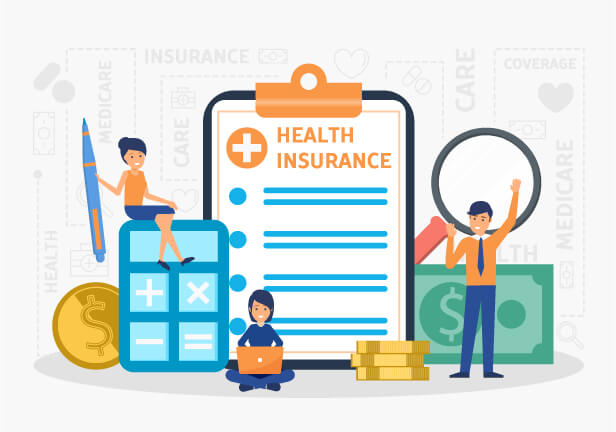As the U.S. healthcare panorama shifts from a fee-for-service model to a value-based caregiving approach, many clinical processes have adapted to the latter. Healthcare staff is continually progressing toward achieving optimum value-based care approaches. However, the billing process still falls far behind. Pay statements, patient pay services, billing, and coding regulations, claims analysis, claims submissions and corrections, and essentially the medical billing processes domain is still a work in progress. Medical billing processes and procedures are still following traditional models, which makes them highly susceptible to billing issues. It is no surprise, therefore, that more often than not, patients end up dissatisfied with medical invoicing and patient billing.
Patient billing errors involve a cumbersome process of rectification that can span months. Also, illegal billing practices are prevalent to circumvent medical billing and coding regulations. Pay statement corrections are equally tedious for the patient and healthcare organization. A medical billing experience, one that is prone to improper billing practices, is currently rated as one of the most distressing factors of the U.S. healthcare system. As medical billing regulations are constantly revised and modified, keeping up with the changes is a consistent challenge. They have caused many shifts in the medical billing process and procedures over the years. Patient-friendly billing can be achieved through the adoption of intelligent technologies that are aimed at enhancing the billing experience. These solutions are designed to offer medical billing best practices that satisfy the patient and healthcare organization holistically.
Medical Billing Tips to Increase Patient Satisfaction:
The overall profitability and reputation of the medical practice are largely based on the medical billing process flow and its seamless ability to perform functions accurately. Healthcare automation solutions are a critical factor towards achieving optimum medical billing workflows and staying ahead in the game. Here is our list of medical billing guidelines that can considerably increase profitability and patient satisfaction:
1. In-house Billing Department:
When medical billing support and services are outsourced, there is little to no knowledge of patient payment at the healthcare organization. The lack of patient payment solutions causes oversights and dissatisfaction, leading to disownership of the billing process. Expert medical billers and high-end medical claims management solutions can solve problems and queries at the outset and enhance overall profitability.
2. Clear Billing Communication:

Medical billing problems usually originate from miscommunication between multiple entities involved in the clinical process. To close the gap in medical billing mistakes, patients need to be clearly informed on the billing expectations of their practice.
3. Accurate Patient Information:
Improper medical billing can be a result of inaccurate patient information. Medical billing policies and processes need to adapt to electronic payment and statements through the deployment of medical records solutions. Periodic reviews of patient information through case management technologies can aid in keeping information up-to-date. This avoids delays in payments occurring from incorrect information.
4. Verifications and Reminders:

Through EMR system solutions and clinical coding solutions, medical billers can send reminders to patients about their co-pay options and verify patient eligibility. This ensures that the medical billing process steps are accurately maintained for maximum profits.
5. Prompt Bill Generation and Collections:
The billing experience of the medical practice and patients can be significantly enhanced through up-front billing and clear medical billing terms. Healthcare billing can be simplified through timely collections. Medical coding errors can be mitigated through the deployment of ICD-10 code solutions.
6. Standard Collections Process:

For absolute clarity among billing staff and patients, certain hospital management systems offer an automated standard procedure that meets varied medical billing requirements. Common medical billing mistakes are avoided through automated processes. This methodology allows for faster reimbursements in healthcare through a lower rate of incorrect medical billing.
7. Double-checking Claims:
The complexities of health insurance billing can be evaded by medical insurance billers through accurate coding. Certain healthcare provider solutions offer coding software to reduce rejections and resubmissions. Finally, this process ensures that medical insurance billers optimize their time through accurate coding.
8. Patient Bill Support:
Through a dedicated team of experts, patient payment queries can be addressed, and medical billing requirements can remain updated. These specialists also ensure that claims are accurately filled, and minor details are not overlooked. With faster billing and attention to detail, reimbursements are fast-tracked, and errors are mitigated. Lastly, all related information and updates are factored in through their expertise.

Healthcare revenue cycle management solutions aid in enhancing the billing experience by delivering accurate billing results and enhancing financial health. Efficient revenue cycle management is crucial toward maximizing payment reimbursements and minimizing rejections and risks. Proactive billing procedures lie at the crux of increased revenue generation.
The Statistics Story:
- Based on a study conducted by Health CPA, “81 percent of patients surveyed reported anger and frustration with medical bills and, according to the Association of Oncology Social Work, over 50 percent of cancer patients say that their medical bills have had a negative impact on their recovery.”
- Incorrect medical billing causes U.S. healthcare organizations to lose up to $125 billion in uncollected revenue every year.
- According to a study from TransUnion, “nearly 80% of patients owe more than $500 to their healthcare providers, and 51% owe more than $1,000.”
- The same study reports that patients experience a 13% average increase in deductibles and out-of-pocket costs.
- According to Health Affairs, “One in 10 insured adults have said they’ve received a surprise bill in the past year. The average surprise bill is more than $600, which is more than 40 percent of families would be able to pay without borrowing or selling something.
What Is Surprise Billing?

Surprise billing is a term that literally defines an outrageous, unexpected bill. Even when a patient has done enough research, picked optimum health plans, and been regular with their premiums – they can still be at risk of surprise billing. Surprise medical billing occurs when a patient goes to an in-network facility but receives care from an out-of-network doctor. This loophole in the U.S. healthcare system has caused enormous distress to patients. It would be prudent for the healthcare organization to inform the patient about the costs involved with surprise billing before they receive the care.
The Patient Advantage:
No matter how seamless the clinical experience, patient satisfaction is largely based on their personal billing experience. Even if the patient is completely satisfied with the treatment procedures, a bad billing experience, and medical billing issues can completely change the dynamic. Patient recommendations and repeat encounters are all finally dependent on professional billing services. Successful medical billing directly translates to a positive billing experience for patients.
Patient-centered Billing:
Among the many shifts in healthcare towards being more patient-centered, the physician billing process still needs to fall in line. Healthcare organizations need to focus on increasing the positive impact of the patient’s billing experience. Instead of creating situations like ‘disputing a claim’ or ‘fighting charges,’ medical practices need to adopt strategies and solutions that keep the patient’s interest as the critical factor towards a successful caregiving journey. Custom healthcare solutions, including telehealth services, provide the practice and patients with a kind of virtual assistance that mitigates billing challenges.
Patient Responsibility in Medical Billing:

As patients take on increasing ownership of their own health, medical invoices should be no exception. Physician medical billing and medical claims billing details should be clearly communicated to the patient for responsible caregiving and overall satisfaction. To achieve this objective, healthcare organizations can adopt integrated healthcare solutions. Billing-related questions should be addressed with the same urgency as questions related to the patient’s health.
Keeping Your Practice Up-to-date:
Illegal medical practices are not always intentional and can sometimes be a result of not staying in tune with the constantly changing medical billing environment. Medical credentialing and remittance software solutions are one way to keep up with the changes through software updates. Billing and coding protocols are maintained, ultimately leading to a better billing experience and higher revenue for the healthcare organization. Finally, healthcare cloud services can be incorporated to enhance the billing experience and keep billing-related errors to a minimum.
Conclusion:
Financial issues and compliance risks have always been a concern for healthcare providers and patients alike. However, with the emergence of intelligent automation technologies, help is at hand. The billing experience can be empowered significantly through its adoption.
A preventive approach is a way forward toward overcoming the hurdles involved in the healthcare billing space. With the constantly changing panorama of the healthcare domain, medical practices must maintain the pace through software solutions that can seamlessly adapt to modifications. Additionally, as medical practices begin to take on a more proactive approach towards mitigating billing challenges, patients stand to gain a higher satisfaction level. Consequently, healthcare organizations will reap the benefit of greater patient experience through timely reimbursements and higher revenues. It is a win-win situation for both.
Resources:
https://www.carecloud.com/continuum/how-to-improve-the-billing-experience-for-your-patients/
http://www.healthcarebusinesstech.com/medical-billing/
https://www.hapusa.com/6-proactive-medical-billing-tips/
https://www.healthaffairs.org/do/10.1377/hblog20190808.585050/full/
OSP is a trusted software development company that delivers bespoke solutions as per your business needs. Connect with us to hire the best talents in the industry to build enterprise-grade software.

How can we help?
Fill out the short form below or call us at (888) 846-5382
Looking for software solutions to build your product?
Let's discuss your software solutions for your product in our free development acceleration call!
Get In Touch arrow_forwardDiscuss Your Project Handover with a team of expert Book a free consultation arrow_forward
About Author

Written by Riken Shah linkedin
Riken's work motto is to help healthcare providers use technological advancements to make healthcare easily accessible to all stakeholders, from providers to patients. Under his leadership and guidance, OSP Labs has successfully developed over 600 customized software solutions for 200+ healthcare clients across continents.

















